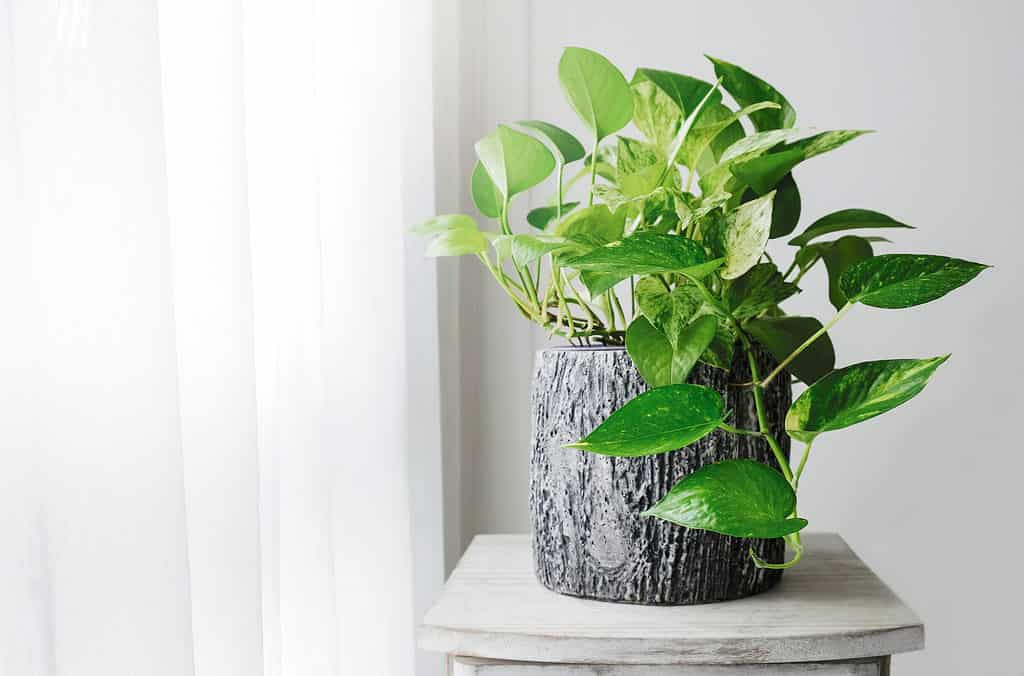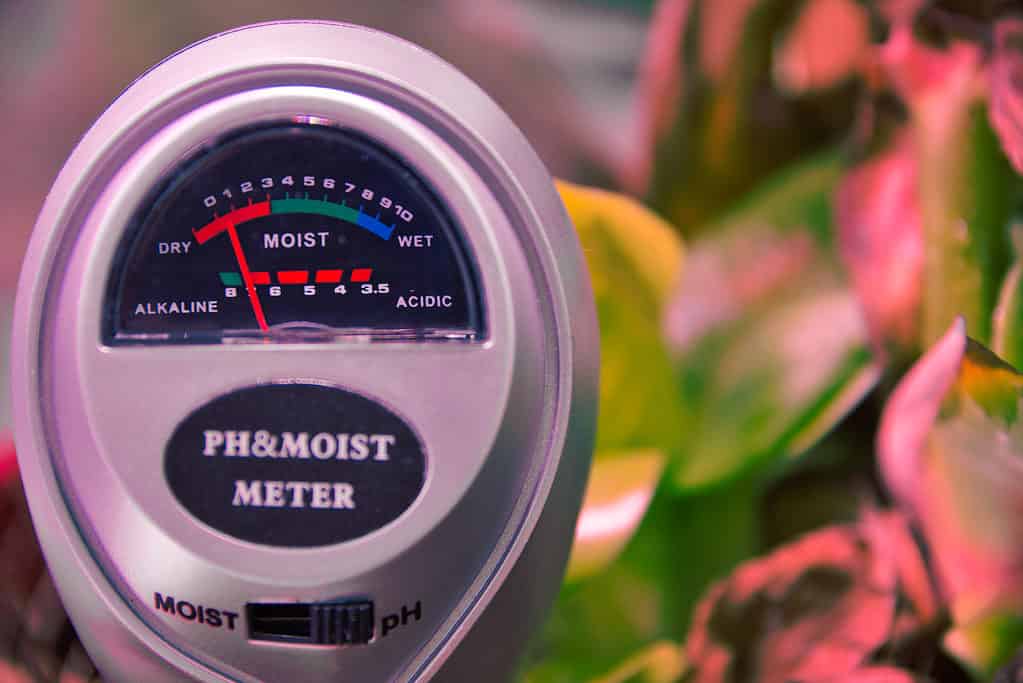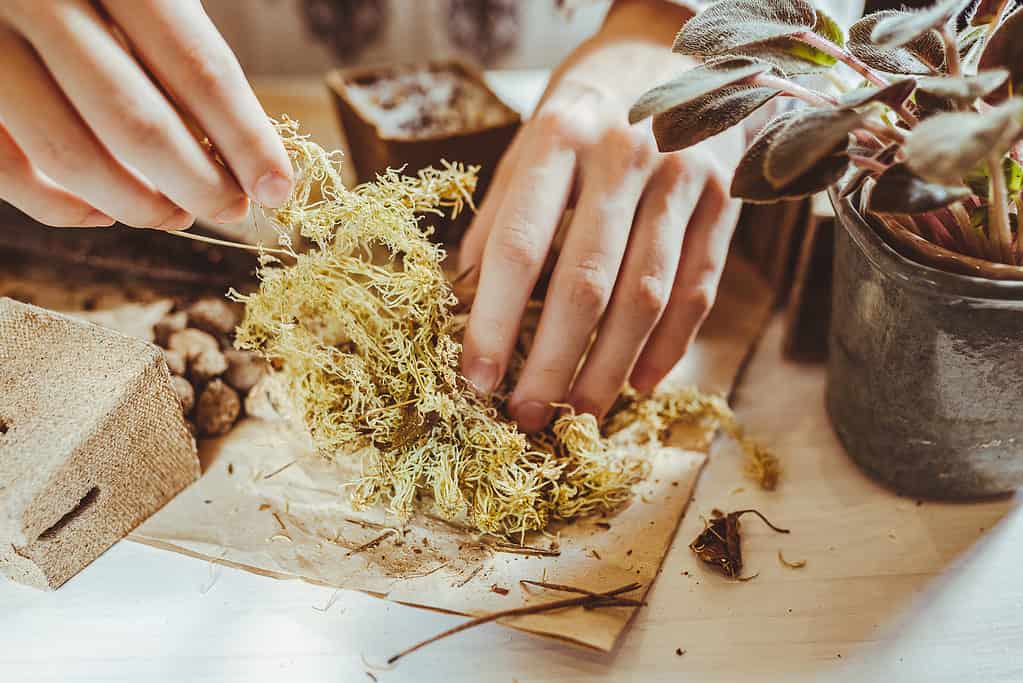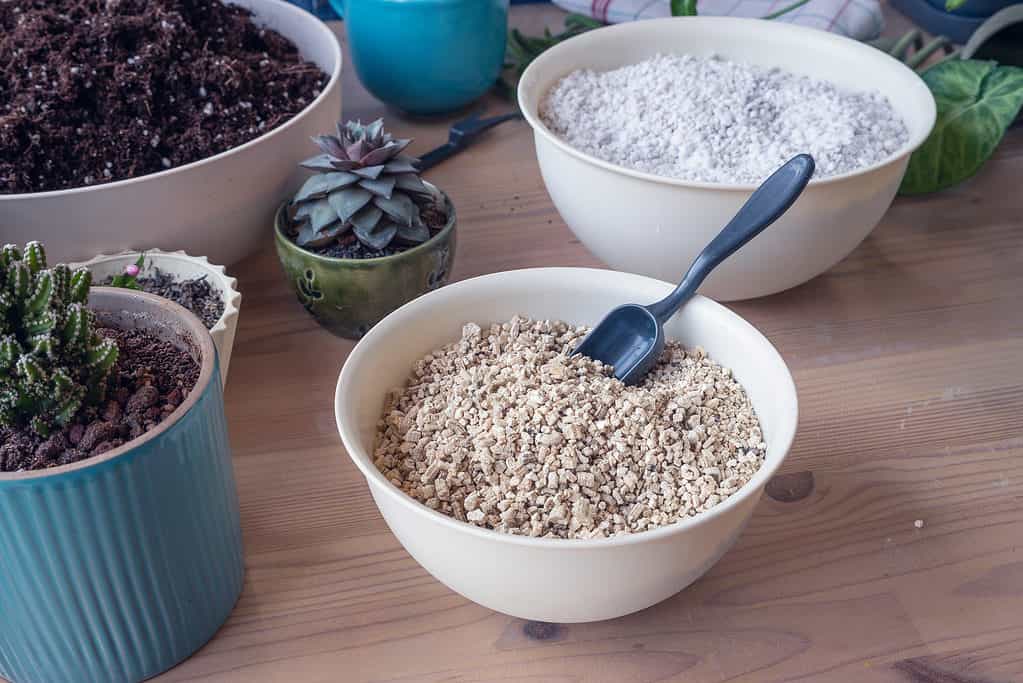You’re probably wanting to ensure you choose the best soil for pothos to help it thrive and beautifully grow. Using a growing medium that meets your plant’s growing needs will help it develop healthy roots and beautiful foliage. While pothos is known for being an easy grower, it still needs adequate soil in order to thrive.
In this guide, we’ll help you decide what soil to use for your pothos houseplant. We will also share tips for amending the soil.
So, without further ado, let’s jump in!
What is Pothos?
Before we discuss the best soil for this lovely plant, we’ll quickly cover what pothos is! In the wild, pothos grows as a vining tropical plant that thrives in the under-story of trees. As it grows, it begins climbing up and around the tree. It gains nutrients from more indirect sunlight, entering maturity after 10 years of age and growing significantly larger. Mature pothos in the wild can reach incredible lengths of up to 65 feet long, with leaves that can grow up to 3 feet long. As a houseplant, pothos remains in its vegetative, or juvenile, phase and does not grow longer than 10 feet. As a juvenile perennial houseplant, pothos also doesn’t tend to live longer than 10 years.

Pothos is an easy-to-grow trailing vine that thrives in slightly acidic, well-aerated and well-drained soil.
©ArtBackground/Shutterstock.com
Best Soil for Pothos: Requirements
In its ideal conditions, pothos grows in slightly acidic (6.0-6.5 pH), well-aerated, and well-draining soil. Many quality indoor potting mixes already contain what pothos needs to thrive. However, you may want to make your own potting mix. Below, we’ll cover each of the necessary soil conditions for pothos.
Soil pH
Soil pH describes how acidic, neutral, or alkaline the soil is. A pH of 7.0 is neutral, under 7.0 is acidic, and over 7.0 is alkaline. Now, for soil, a range of 6.5-7.5 pH is generally considered neutral soil. Slightly acidic falls within 6.0-6.5, and slightly alkaline falls within the 7.5-8.0 pH range. Many cultivated plants do well growing in neutral to slightly acidic soil as nutrients are most readily accessible to plants’ roots when they exist in the soil in this pH range.
Pothos is no exception to this and thrives in slightly acidic soil where its roots can easily access all its required nutrients. If you don’t know the pH of your plant’s soil, you can test it by either sending a sample off to a lab or by purchasing a soil pH meter. They work by measuring the hydrogen ion activity in the soil.

You can test your plant’s soil by either sending a sample of the soil to a lab or by purchasing a soil pH meter and testing it yourself.
©iStock.com/kb79
How to Change Soil pH
If you need to amend your potting soil, you can either add limestone to raise the pH level or add sulfur to help lower the pH. Generally, if you need to add limestone, using dolomitic limestone is a great option. Dolomitic limestone is a mixture of calcium carbonate and magnesium. You can purchase sulfur and limestone in powdered or pellet form through gardening stores and online retailers.
Best Soil for Pothos: Aerated Soil
While pothos needs high humidity and moisture in its soil, this plant is quite susceptible to root rot in soggy soil. As such, it needs soil that has a high concentration of oxygen with a large percentage of soil pore space filled with air.
Tips for Aerating Soil
In the wild or a garden, soil-dwelling invertebrates and insects help aerate the soil by tunneling. If you’re making your own houseplant potting mix, you’ll want to ensure you’re using well-aerated soil. This means using soil with large, loose soil particles like sandy or loamy soil rather than clay-based soil, which is dense with tight, small soil particles.
To further aerate the potting soil, you can add sphagnum moss, a dried bog moss that improves both soil aeration and water retention. This moss can help keep the soil oxygenated but doesn’t retain moisture to the extent that it creates soggy soil. Once the pothos is planted, you can mimic the tunneling of soil critters by gently using a chopstick or similar tool to create small air pockets in the soil. Just ensure to not damage the roots by staying more toward the outside of the pot.

Adding sphagnum moss to your potting soil improves both soil aeration and water retention.
©iStock.com/Larisa Stefanuyk
Drainage
To prevent root rot, pothos needs to grow in moist but well-draining soil. Similar to creating good aeration, you’ll want to choose soils that are less dense, with large soil particles that leave space for oxygen and water drainage.
Creating Good Drainage
Many potting soils contain perlite, which is a naturally-occurring mineral added to prevent soil compaction and improve drainage. If you’re mixing your own potting soil for pothos, adding perlite can be a great and easy way to ensure your plant doesn’t suffer root rot.

Adding perlite to your own potting soil can be a great way to ensure your pothos plant doesn’t suffer root rot.
©iStock.com/CemSelvi
Best Soil for Pothos: Nutrients
Houseplants can often benefit from added nutrients as they don’t receive as many nutrients naturally from the soil as plants grown outside do. This is because healthy outdoor soil is teeming with microscopic organisms that contribute to the health of the soil. These organisms comprise the soil microbial community of bacteria, microscopic fungi, protists, and archaea.
Adding Nutrients
Now, there are two main ways to add nutrients to your soil. You can either add an appropriate amount of compost with a thriving microbial community, or you can add fertilizer to your soil. If you choose to add fertilizer, you’ll definitely want to make sure you don’t fertilize too quickly or add too much. If you do, you’ll likely burn the roots of the pothos plant.
During the spring and summer growing seasons, you can add a balanced liquid-based 10-10-10 or 20-20-20 indoor fertilizer about once a month. This ratio means the fertilizer either contains 10% nitrogen, 10% phosphorus, and 10% potassium, or it contains 20% nitrogen, 20% phosphorus, and 20% potassium. Adding fertilizer during the dormant season can damage your plant as the roots will not uptake the nutrients.
The photo featured at the top of this post is © Christina Siow/Shutterstock.com
Sources
- Nutrient Stewardship, Available here: https://a-z-animals.com/blog/discover-pothos-varieties/
- Bardgett Richard D. and Caruso Tancredi 2020Soil microbial community responses to climate extremes: resistance, resilience and transitions to alternative statesPhil. Trans. R. Soc. B37520190112, Available here: https://royalsocietypublishing.org/doi/10.1098/rstb.2019.0112
Thank you for reading! Have some feedback for us? Contact the AZ Animals editorial team.






